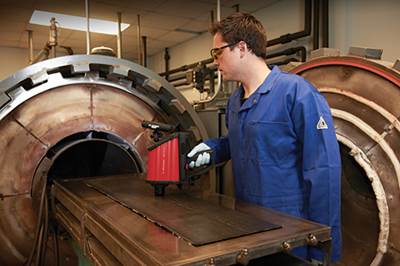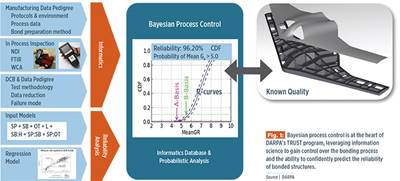Structural adhesives, Part II: Aerospace
Tried-and-true legacy epoxies are a must for aerospace composites, but usage is increasing with improved forms.
As they do in automotive, marine and other industrial markets (see “Part I,” via Learn More located under "Editor's Picks" on the top right), structural adhesives play an important part in aerospace manufacturing. “The importance of adhesives in aerospace is increasing significantly with higher composites usage,” says Bjorn Ballien, global business development manager development manager, aerospace adhesives, at Henkel AG & Co. KGaA (Bay Point, CA, US). Historically used to bond faceskins to honeycomb core in sandwich constructions, such as flight-control surfaces and interior panels, adhesives today see increasing opportunities for use in composite primary and secondary structural assemblies.
As is true on the industrial side, the structural properties of adhesives for aerospace applications can be tailored with additives for higher or lower viscosity, greater toughness, shorter cure time, longer working time and other properties. In fact, nearly every supplier contacted says it is able to customize an adhesive solution for a customer’s unique situation.
What makes adhesive aerostructural?
Adhesive manufacturers consider an adhesive structural if it can withstand a force of at least 6.9 MPa (1,000 psi) in a lap shear coupon test. But for aerospace applications, there are marked differences from industrial applications in how they are viewed and used. For one, there is a pervasive regulatory requirement for rivets and other fasteners, for redundancy, when adhesives are used to bond joints (see Learn More). That said, structural adhesives are necessary for bonding of some aerospace assemblies, both composites-only and composites-to-metal. They also function in specialized applications, as shim materials and in the form of surfacing films designed for lightning strike protection.
Adhesives for aerospace use are typically applied in the form of either a paste or a film. Pastes, with viscosities of 8,000 cps or more, tend to form thicker bond lines and, therefore, fill and bridge gaps between bonded surfaces and can offer significantly greater elongation and impact resistance. They also are used for bonding detailed parts and in more metal-intensive situations. Films, which consist of a thin layer of pre-catalyzed resin supported on a scrim or paper backing, are sold in roll or sheet form. They are used in large-area structural bonding applications in more composites-intensive constructions. Ideal for composite parts with a very high fiber content and a correspondingly low resin content, says Ballien, the film flows under application of heat to bond the faying parts.
Further, when adhesives are applied to “green” (B-staged) composites and co-cured, the adhesive’s chemistry actually dissolves molecules in the adherend, forming covalent chemical bonds that chemically lock the two together. Adhesives also can attach a cured part, such as a stringer, to an uncured part (a wingskin). They also are used in a secondary bonding process, where two cured composite parts, or a composite and metal part, are joined.
Historically, epoxy has been the dominant adhesive chemistry, due to its strength, stiffness, toughness and relatively high temperature performance. It remains so, but structural adhesives based on polyimide and bismaleimide (BMI) chemistries have carved out a niche. These adhesives can be processed at higher temperatures and, most importantly, be put into service at much higher sustained operating temperatures than epoxies.
Because suppliers are almost inevitably prevented by nondisclosure agreements (NDAs) from sharing details about contractual arrangements, CW’s report here is short on actual aircraft/spacecraft application specifics, but catalogs and describes the intended uses for an extensive list of available aerospace-grade adhesive products from key suppliers.
Bonding aircraft structure
A leader in high-performance adhesives for bonding metal and composite aircraft structures, Cytec Solvay Group (Woodland Park, NJ, US) has supplied film adhesives for at least 30 years, says Dalip Kohli, the company’s research and innovation director: “Our adhesives are used for numerous structural bonding applications for both monolithic composite and honeycomb structures.” Cytec Solvay supplies films and pastes based on epoxy, phenolic, BMI and polyimide resin chemistries, along with bonding primers, core-splice adhesives and potting compounds — adhesives used to secure metal hard points or fasteners within a cored part — its well-known trademarked FM-series products.
Trzaskos and Kohli both say Cytec Solvay devotes R&D time and funds to improve the reliability of bonded composite structures, developing new multifunctional surfacing and lightning strike protection technologies as well as new adhesive forms and application technologies (including automation) to reduce overall part cost. “We have new adhesives, including FM 209-1, that are designed for both autoclave and out-of-autoclave bonding,” says Kohli. Adds Trzaskos, “Our ultimate goal is to replace or reduce fasteners with bonding to save weight and cost, and to eliminate hole-drilling to improve performance of composite structures.”
With a wide-ranging product portfolio, Evonik Hanse (Geesthacht, Germany) supplies many aerospace products, including additives, chemical building blocks and more for resin and adhesive matrices that are ultimately used in structural adhesives, says Dr. Stephan Sprenger, Evonik Hanse’s senior market development manager: “Because a key challenge with composites is the need to reduce costs, there is a big demand for adhesives that do not require surface pretreat-metals, core bonding, liquid shims and lightning strike films. Known for high-performance films in a range of thicknesses and weights, Henkel offers LOCTITE EA 9696 AERO, a toughened film adhesive for bonding composites, honeycomb core to faceskins, as well as metals, that offers 60 days of out-time, yet cures in less than 90 minutes when heat is applied (130°C). Ballien notes that all Henkel films are formulated for chemical compatibility with aerospace prepregs and offer good mechanical performance during service. An extension of film adhesives, epoxy surfacing films formulated with an embedded nonwoven fabric, such as LOCTITE EA 9845SF AERO, improve the surface quality of honeycomb-cored composite parts, reducing surface dimpling and minimizing surface prep before painting; the film is available in lightning strike configurations with meshes.
Liquid shims are another core technology for the company; Ballien explains that the products are specifically formulated paste adhesives that flow to fill gaps between two faying composite surfaces, which unlike metals, cannot be ground or milled to reduce surface undulations or waviness that result from the molding process. “The liquid shim product fills gaps up to 3 mm and can handle the bonding and fatigue stresses as well, once cured.” LOCTITE EA 9377 AERO is a third-generation epoxy shim product that offers long out-time to facilitate bonding large parts, such as composite ribs to large wingskins. It also offers very high compressive strength and a coefficient of thermal expansion (CTE) matched to typical carbon composite substrates.
Given the increases in commercial aircraft build rates, Henkel offers its LOCTITE automated meter/mix and dispensing equipment alongside its paste adhesives to improve mixing reliability and speed production assembly as part of its focus on innovations that make adhesive bonding faster and more efficient.
Hexcel's (Stamford, CT, US) well-known, trademarked Redux epoxy film adhesives, a standard for years, are for customers who bond sandwich panels used in structural aerospace applications, says David Elliott, Hexcel’s adhesives product manager: “Where high routine service temperature is required, up to 175°C, Redux 322 is qualified for many engine nacelle applications. Where the principal concern for load is the peel force, then Redux 319, with very high peel strength, is a good option.”
Redux 319 is widely used in wing structures and flight-control panels. Film weights range from 50-400 g/m2 and are available either supported by a carrier that aids film placement and resin flow, or in unsupported form, which can be used for the reticulation process in core-to-faceskin bonding (reticulation occurs when film adhesive is placed over a honeycomb core in a specialized press, then heated. This subjects the film to gas pressure, which creates bubbles over the cells that subsequently rupture. The burst adhesive bubble then retracts to form a fillet along the cell rims, which then adheres the honeycomb walls to the faceskin).
The company’s film adhesive portfolio includes products as light as 50 g/m2, which are used in space satellite programs where weight savings is obviously a necessity. The Redux adhesive films have been tested for compatibility with Hexcel’s trademarked HexPly prepreg resins, and common chemistry is used for both.
Magnolia Advanced Materials Inc. (Atlanta, GA, US) is another long- term supplier of high-performance epoxy adhesives, primarily pastes and liquid shims, for aerospace structural assembly, and has been in business since 1957, says the company’s R&D director Steve Peake: “We have a diverse customer base manufacturing fixed- and rotary-wing aircraft for commercial, general and military aviation. Our products excel at bonding composites, metals and dissimilar substrates.” The company specializes in tailoring an adhesive specifically for a customer’s application, adds Peake, noting that working time, cure time, density, mechanical performance and thixatropy all can be tailored. “These aren’t off- the-shelf products. We customize to meet the customer’s needs.”
A well-known Magnolia product is the 6398 epoxy paste family, designed for room-temperature cure for large-component assembly, including wing boxes or large wing structures. Magnolia’s technical director Greg Bunn says that 6398 provides high compressive modulus and good strength for key aircraft structures. Epoxies can be made very tough with certain additives, but one downside of that is the potential for lower service temperature. “Our products employ next-generation toughening technologies which avoid an unfavorable trade-off between toughness and Tg,” he says. Liquid shim pastes, Bunn adds, are a big part of the company’s sales, particularly on military aircraft platforms where bonding is more common than commercial aircraft. Says Peake, “Liquid shims are key to reducing part scrap rates by filling the gap created by mismatch in part dimensions.”
Given its a long history of engineering adhesive development, Permabond Engineering Adhesives Ltd. (Colden, Hampshire, UK and Pottsdown, PA, US) serves virtually all markets, including aerospace, and offers a broad range of adhesive chemistries in liquid and paste form. The company’s technical manager Manny Dias says, “The widespread use of adhesives in aerospace, in the interior, structure and engine area, is driven by the need for strength with weight reduction.” Permabond’s two-part structural epoxies ET5428 and ET5429 are designed to bond carbon fiber composites and many other substrates, including metals.
Permabond offers a line of lightweight epoxy-based honeycomb core edge fillers with very low density to help keep aircraft components as light as possible, adds Dias.
Adhesives for high temperatures
Although standard epoxies, as a rule, process at higher temperatures than other polymer adhesives, the use of adhesives in aerospace applications in close proximity to jet engine “hot zones” and in other critical applications where heat is generated has opened a market for adhesives capable of sustaining their performance properties at unprecedented operating temperatures. Permabond added a high-temperature-resistant structural epoxy adhesive to its range several years ago. Permabond ET5401 was developed to bond a variety of engineering materials, including composites, thermoplastics, metals and ceramic materials. The epoxy can survive 140°C continuously, while maintaining its performance characteristics, says Dias: “Permabond ET5401 is a toughened product, which is ideal for bonding dissimilar materials, such as metal to composite, where differential thermal expansion and contraction may occur or when good impact and vibration resistance is important.”
However, other polymers have come into use in parallel with higher-temperature laminating resins. Renegade Materials Corp. (Miamisburg, OH, US), for example, makes structural adhesives for use with its high-temperature polyimide and bismaleimide (BMI) prepregs, says general manager Laura Gray. She points out, “High-temp adhesives are not meant to be compared with epoxy adhesives. Our materials are designed to perform in extremely severe environments, so we’re not focused on ‘ultra-high strength,’ but rather adhesives that have enough strength to do the job at high service temperatures.” Gray adds that the adhesives nevertheless do demonstrate lap shear strengths of between 14 MPa to 21 MPa at room temperature, with little or no degradation at elevated temperatures. Use temperatures for the polyimide adhesives can reach 340°C, and for the BMIs, 232°C.
Renegade’s adhesives are available in film and paste form: Four polyimide adhesives have been developed for use with specific polyimide prepreg resins (those resins include AFR-PE-4, MVK-14, RM-1100 and RM-1066, which is the non-methylenedianiline [MDA] replacement for legacy Skybond resin). Two BMI adhesives, RM-3007 and RM-3011, also are offered, in film or paste, with the pastes intended for core-fill applications (filling the cut edges of honeycomb core) and for bonding fasteners and metallic hard points into cored parts. Primers are available for prepping surfaces for paste products.
Gray reports that most customers use adhesive films, which bond very well to metal (typically titanium) and composites, with simple surface prep that includes cleaning and surface grit-blast: “There are very few choices for high-temperature cores, but our adhesives work very well with them, most frequently Hexcel’s HRH-327 polyimide honeycomb.” All of Renegade Materials’ adhesive films are reportedly non-toxic and exhibit excellent tack and handling characteristics and tailorable out-time. Films are supported with a variety of lightweight scrims to enhance handling and to control bond-line thickness.
Optimizing the bond
Adhesive formulators emphasize that having the right adhesive is only part of the answer. Handling the adhesive and the adherends is key to success. One important way composites manufacturers can optimize adhesive bonds is by increasing the surface free energy on the mating faces of the substrates that will be bonded. A common method is to abrade the substrates’ bonding surfaces, which improves chemical bonding by shearing the top layer of matrix molecules to create broken atomic bonds. But, in the case of composites, this must be done carefully to avoid damaging fibers. For that reason, many aerocomposites molders employ peel ply, a release fabric placed over the layup and cured with the part; peeling off the ply after cure shears the top layer of molecules without damage to fiber and, ideally, enhances surface free energy for bonding without other surface prep. In reality, peel plies have come in less-than-ideal dry and resinous or “wet” forms. The latter are preimpregnated with resin to avoid leaving behind loose fibers that contaminate the adherend surface (a problem with the former). But variations in wet peel ply fabric weaves and resin toughness also can affect subsequent bond strength. In short, dry or wet peel ply alone might result in weak bonds (for more on this subject, see this article at the CW Blog).
“Surface preparation is a critical component of any bonded aerospace assembly, especially in composite bonding. We don’t want the adhesive interface to be the weak link,” says Cytec Solvay’s technical fellow Bill Trzaskos, but adds, “The entire material system, including prepreg, adhesive film and peel ply should be thoroughly studied to confirm optimum performance.” Cytec Solvay recently introduced a new resinous peel ply, trademarked FM 3500 EZP, designed to work with the majority of epoxy-based prepregs and adhesives.
LOCTITE EA 9895 AERO is Henkel’s resinous peel ply. Reportedly much easier to remove from the composite surface, it is said to leave behind no fiber contamination, creates a clean bonding surface that increases bond durability and improves assembly productivity. “No other mechanical or manual surface preparation is needed for bonding,” asserts Ballien. “A lot of customers use peel plies, since they can generate cost savings in terms of elimination of labor and sanding hours, as well as solvent usage.”
Hexcel also supplies a range of peel plies, both dry (F161) and resinous or wet (M21), with the latter generally providing a better bonding surface, says Elliott.
What’s to come?
When asked about the future of adhesives in aerospace, interviewees’ answers were strikingly similar to those listed in CW’s previous aerospace adhesives overview, almost 9 years ago: Development of better bonding systems with new chemistry — potentially, nano-technologies; reductions in the surface preparation required to optimize bonding in order to speed production; chemistry changes necessary to improve health and safety and sustainability in many products; and continuation of the trend towards application-specific products tailored to each customer.
Ballien says aerospace fabricators might begin to adopt technology now used in the automotive and industrial sectors, to increase production efficiency, including out-of-autoclave strategies. Automation of adhesive application will certainly increase, to streamline aerospace part production: “Customers want more automation, especially when dealing with larger composite parts,” he notes.
“Aerospace has been slow to adopt more automated solutions,” Ballien observes, but insists, “but that is changing rapidly.”
Related Content
Carbon fiber in pressure vessels for hydrogen
The emerging H2 economy drives tank development for aircraft, ships and gas transport.
Read MoreThe potential for thermoplastic composite nacelles
Collins Aerospace draws on global team, decades of experience to demonstrate large, curved AFP and welded structures for the next generation of aircraft.
Read MoreTU Munich develops cuboidal conformable tanks using carbon fiber composites for increased hydrogen storage
Flat tank enabling standard platform for BEV and FCEV uses thermoplastic and thermoset composites, overwrapped skeleton design in pursuit of 25% more H2 storage.
Read MorePlant tour: Albany Engineered Composites, Rochester, N.H., U.S.
Efficient, high-quality, well-controlled composites manufacturing at volume is the mantra for this 3D weaving specialist.
Read MoreRead Next
Certification of bonded composite primary structures
OEMs develop technology to quantify uncertainty in pursuit of the no-bolt bondline.
Read MoreBuilding TRUST in bonded primary structures
A DARPA program aims for certification via Bayesian process control system for the factory floor, bounding uncertainty and predicting reliability in real-time.
Read MoreStructural adhesives, Part I: Industrial
Today’s myriad chemistry options enable formulators to tailor adhesives to customers' exact application requirements.
Read More

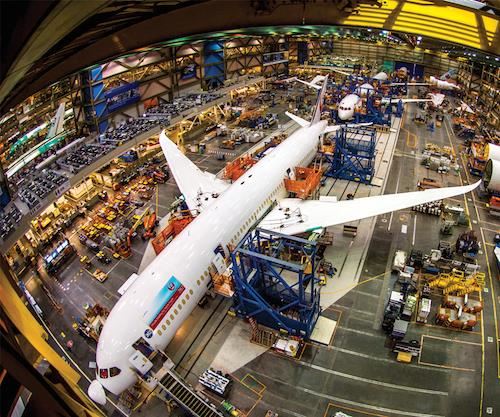
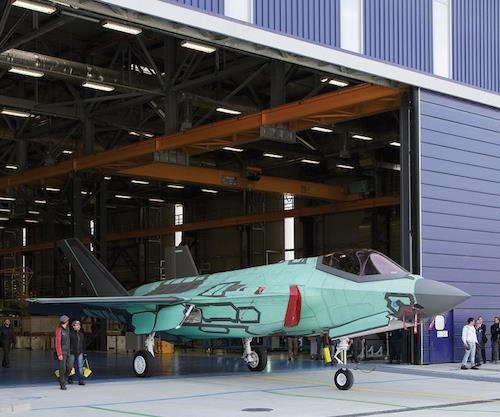

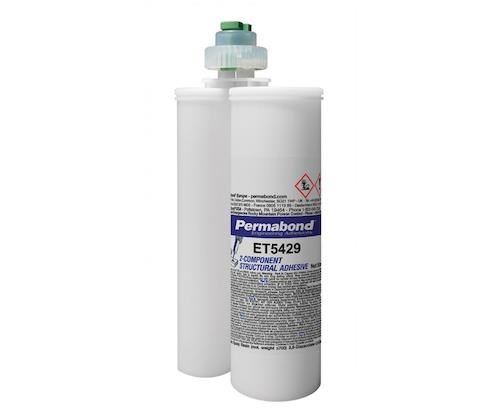
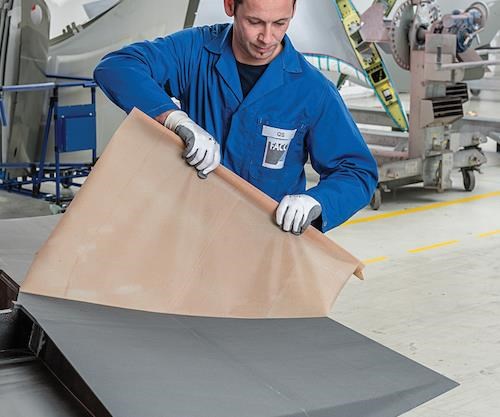
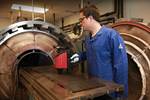

















.jpg;maxWidth=300;quality=90)







